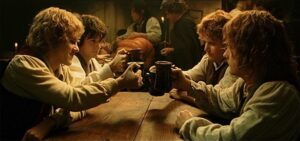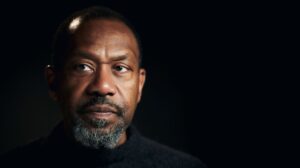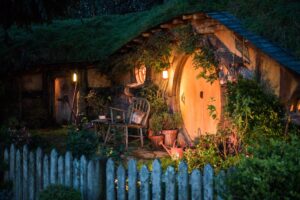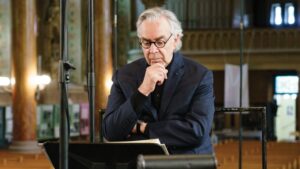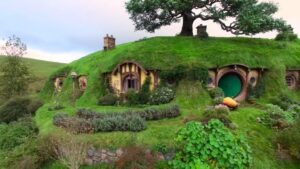Amazon Prime’s The Lord Of The Rings is now slightly less than a year away from release, and we still know shockingly little about the most epic (or at the very least expensive) streaming series ever made. Every tidbit of new information we learn seems to point in a different direction, leading fans on wild goose chases as we try to piece together when the series is set in the sprawling chronology of J.R.R. Tolkien’s Middle-earth, how much time and space it will cover over a reported span of five seasons, and whom exactly it will follow.
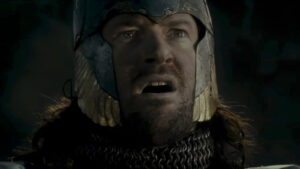
If you’ve been following my coverage of The Lord Of The Rings for a while, you might know the basics, but here’s a refresher before we get to the latest round of rumors. First of all, despite the fact that it’s still being referred to as The Lord Of The Rings, Amazon’s series is a prequel, not an adaptation of Tolkien’s novel or a remake of Jackson’s trilogy. Up until two days ago, our only certainty was that the series would take place sometime in the fabled Second Age of Middle-earth – which doesn’t exactly narrow it down much, seeing as the Second Age is a period of three-thousand, four-hundred and forty-one years.
Only adding to the confusion, Amazon’s first officially released image from The Lord Of The Rings – purportedly a stunning screenshot from the first episode – depicts a scene from long before the Second Age began, during the Years of the Trees; exponentially widening the scope of the tale.
But perhaps we may finally be able to zero in on a specific character, and a tangible timeframe. New reporting from Fellowship Of Fans suggests that one of The Lord Of The Rings‘ central protagonists, from episode three onwards (presumably to the end of the show), will be Isildur, a Númenórean prince who became the first king of Gondor and played a major role in setting up the events of The Lord Of The Rings proper, when he cut the One Ring from the dark lord Sauron’s hand. Additionally, Redanian Intelligence reports that Maxim Baldry – who was among the first actors rumored to be cast – will portray Isildur.
This won’t be Isildur’s first time appearing onscreen. Both Peter Jackson and Ralph Bakshi’s adaptations of The Lord Of The Rings open with memorable depictions of Isildur defeating Sauron at the end of the Second Age and of Isildur’s own death at the dawn of the Third Age when the One Ring slipped from his finger and betrayed him to the orcs. As far as Second Age characters go, he’s one of the few that casual fans of the franchise might recognize, so it’s not entirely surprising that Amazon would want to establish him early on in the show. But his inclusion in the very first season of Amazon’s series comes as a bit of a surprise.
Isildur was born in Second Age (S.A.) 3209, only two-hundred and thirty-two years before he defeated Sauron in the War of the Last Alliance which concluded the Second Age. Because of his Númenórean heritage, Isildur was extremely long-lived by human standards (he was killed at the age of two-hundred and thirty-four), but his entire lifespan is only a small fraction of the Second Age. By the time he was born, the heyday of the Elves in Middle-earth had ended, the Rings of Power had been forged, the kingdom of Eregion had been sacked and Khazad-dûm had closed its doors to the outside, while Sauron was already wielding the One Ring.
In both Jackson and Bakshi’s adaptations, this nuance is largely lost because the entire Second Age is reduced to just two pivotal events in the history of the One Ring – the forging of the Rings of Power between S.A. 1500 and S.A. 1600, and the War of the Last Alliance in S.A. 3441. Canonically there’s a gap of almost two-thousand years in between these events, but in the films it’s implied that they happen pretty much back-to-back. And now that we have two reliable outlets reporting that Isildur is a protagonist of Amazon’s The Lord Of The Rings, I think we can expect to see the timeline of the Second Age similarly tailored to fit the story Amazon is telling.
Some people have come to the conclusion that Amazon is skipping over the forging of the Rings entirely, jumping straight to the end of the Second Age. But I feel very strongly that that’s not the case, and there’s evidence to support my argument. Think back to the very first map of Middle-earth that Amazon released to promote the series – the map that unmistakably showed the kingdom of Eregion and its capital of Ost-in-Edhil still standing. By Isildur’s time, Eregion had been in ruins for over a thousand years. That same map doesn’t depict Barad-dûr at all, though the fortress was completed in S.A. 1600.
Take a look at Amazon’s official synopsis for The Lord Of The Rings, too. Though it’s fairly vague, there’s one significant line that doesn’t support the theory that Amazon’s series takes place after the forging of the Rings. “Beginning in a time of relative peace, the series follows an ensemble cast of characters, both familiar and new, as they confront the long-feared re-emergence of evil to Middle-earth.” If the series were truly set after the forging at the end of the Second Age, Sauron would already have been at war with the Elves and with the Númenórean empire for centuries.
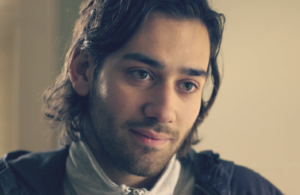
So no, I don’t think that Amazon is skipping over the forging of the Rings, arguably the single-most significant event in the Second Age. My personal belief is that Amazon will simply move the forging backwards to nearer the end of the Second Age, to around the same point at which Isildur first enters the histories of Middle-earth as a young prince of Númenor navigating an increasingly complex political crisis in the royal court. It would require a lot of reshuffling, but that way a lot of events that canonically took place thousands of years apart will now occur almost simultaneously.
There are several benefits to this approach. It would remove the need for potentially jarring time-jumps between seasons to cover all of the events of the Second Age. We’d have more time to get to know our core group of human protagonists and develop a connection with them, without constantly having to worry that by the next season they’ll be dead and we’ll have moved on to their great-grandchildren. And it makes sense to focus exclusively on what Tolkien wrote about the Second Age, so that the writers don’t have to fall back on entirely original plotlines to fill that three-thousand year period.
On the flip-side, I think there’s something to be said for why the use of time-jumps and a constantly rotating cast could have helped reinforce the primary themes of the Second Age – mainly the growing restlessness amongst humans as they become more and more fearful of their own mortality and begin searching for ways to cheat death. If the showrunners could have made us feel some of the same envy and resentment of the immortal Elves that emboldened the Númenóreans to try and wrest the secret of deathlessness from the land of the gods, that would have been an extraordinary feat.
And I can understand why many fans might feel upset that the timeline is again being tampered with dramatically – not to the same extent of Bakshi and Jackson basically taking the two events they needed and ignoring the rest of the Second Age entirely, but still seemingly prioritizing those same two events. This isn’t necessarily a deal-breaker for me, because I think it was always clear that there were going to be adjustments to the timeline one way or another simply because Tolkien himself left behind so many versions of the timeline in which there are countless slight variations, but I get where it might be for some.
As for the news that Maxim Baldry is potentially our Isildur – that definitely makes sense. I was rather hoping he’d be revealed to be playing one of the “fair forms” that Sauron took during the Second Age, but he has the build and beautiful flowing hair of a Númenórean prince, and though my only experience with his acting was through a small role in the last season of Doctor Who, I think he could certainly convey Isildur’s best qualities, his valor and selflessness, which the One Ring swiftly manipulated.
Isildur’s appearance strongly suggests that several other members of his family will also show up in the first season – including his father Elendil and younger brother Anárion, who both died during the War of the Last Alliance; his grandfather Amandil, who died at sea on an ill-fated mission to beseech the gods on Númenor’s behalf; and of course his more distant relatives, Ar-Pharazôn and Tar-Míriel, who became the last king and queen of Númenor and perished in the kingdom’s tumultuous downfall. Isildur’s family weren’t the luckiest folks in Middle-earth.
By the end of the Second Age, Isildur, his sons, and his nephew, were the last remnants of the Númenórean royal family in Middle-earth. Three of Isildur’s sons were killed alongside him during the Battle of the Gladden Fields at the start of the Third Age, leaving only the youngest, Valandil, alive. Valandil inherited the kingdom of Arnor from his grandfather Elendil, while Isildur’s nephew Meneldil became king of Gondor. But while Arnor would fall during the Third Age, Valandil’s descendants would include Aragorn – who re-established both kingdoms and reunited them under his rule.
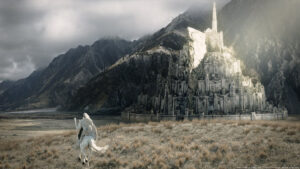
All of this makes Isildur a crucial figure in Middle-earth’s history, and a worthy protagonist for Amazon’s The Lord Of The Rings to follow across several seasons. However Amazon chooses to solve the timeline problems that they’ll be creating for themselves, I hope that they’re handled carefully. Basically, what I’m saying is that if there’s anything in this series that’s even remotely evocative of Thranduil telling Legolas in The Battle Of The Five Armies to seek out the ranger Aragorn when he was canonically only ten years old, Amazon will not hear the end of it from me.
But what are your feelings on this decision? Share your own thoughts, theories, and opinions, in the comments below!
